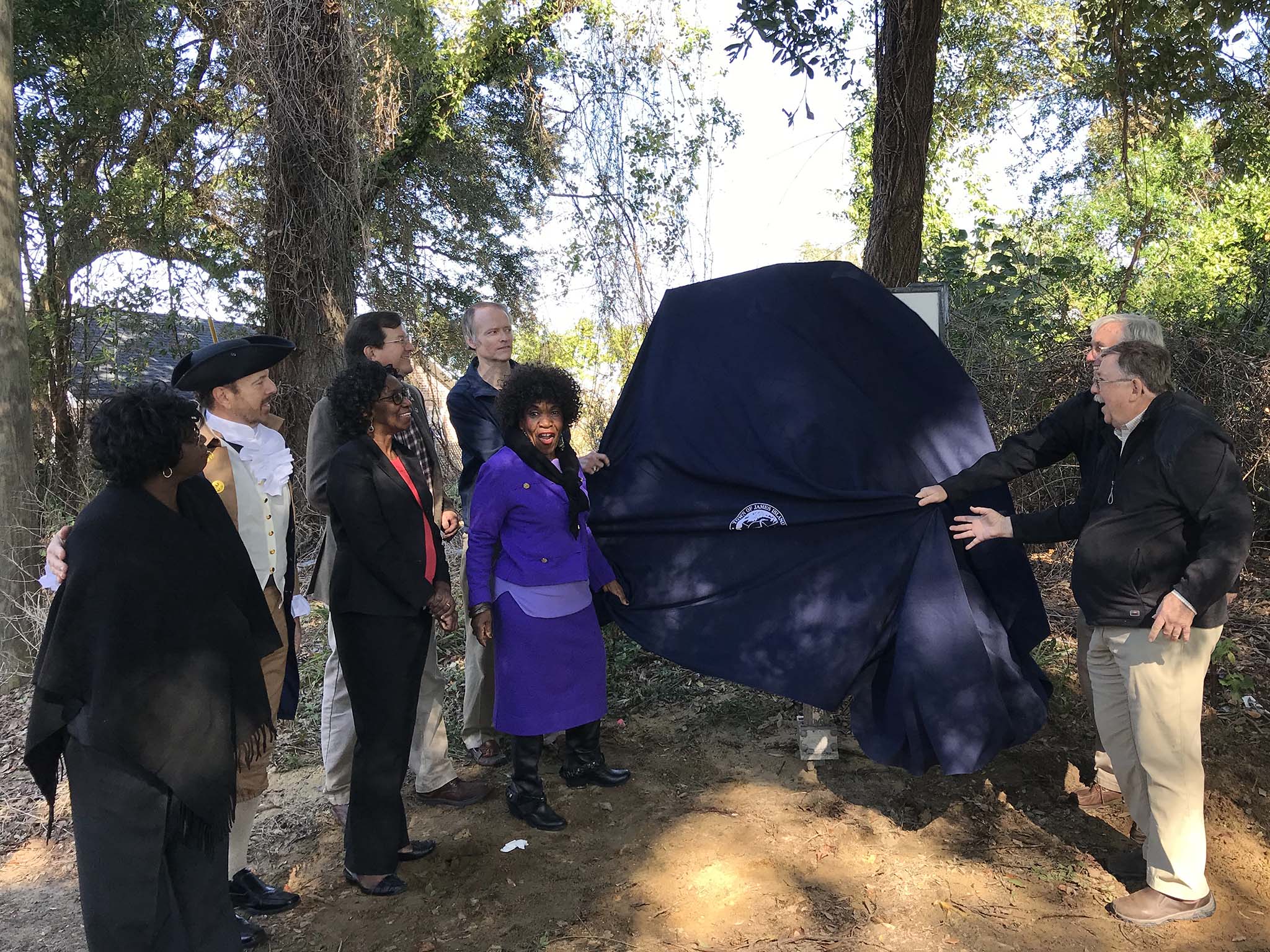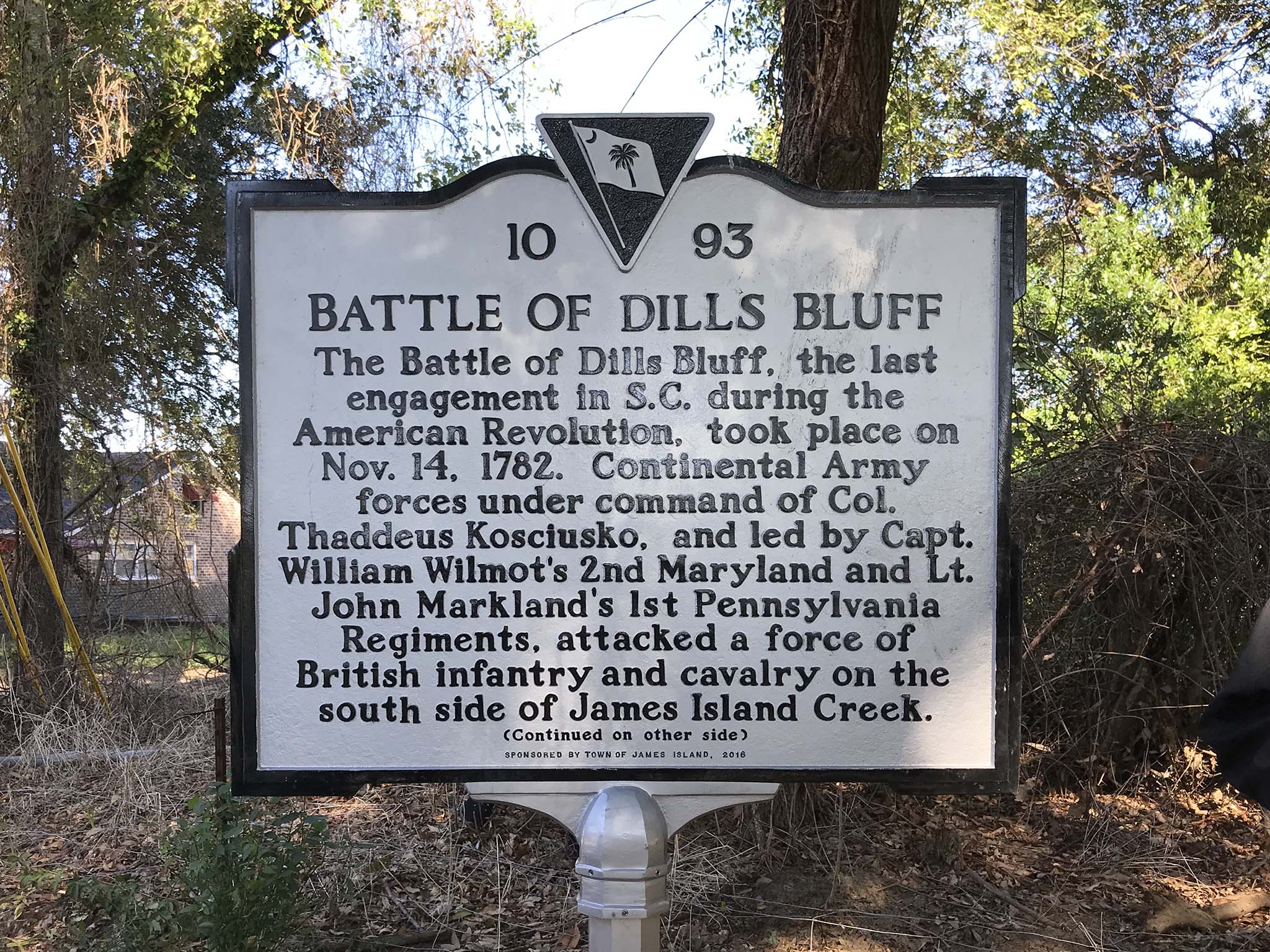Battle of Dills Bluff
On November 11, Director Carl Borick was one of the speakers for the dedication of South Carolina’s latest state historic marker, commemorating the Battle of Dills Bluff, the last battle of the Revolutionary War. The marker, located on Dills Bluff Road on James Island, was placed in the approximate vicinity of the action, south of James Island Creek. Organized by local tour guide Paul Hedden and the Town of James Island, the event was held on Veterans Day, just three days before the battle’s anniversary date.
With the war winding down in the fall of 1782, the British were making preparations to evacuate Charleston and give up their last positions in South Carolina. Patriot forces, posted to Johns Island and present day West Ashley, meanwhile, were making every effort to hasten their departure. Noting that a British woodcutting party consistently appeared in the same location on enemy-held James Island, Captain William Wilmot, of the Maryland Continentals, suggested to General Nathanael Greene that they cross over and attack these men. Led by Wilmot and famed Polish engineer Thaddeus Kosciuszko, a detachment of a 70 Maryland and Pennsylvania Continental troops did so on November 14. They soon found that the British had been reinforced to nearly 300 men, which opened fire on the Americans. Wilmot was killed in the opening volley and the men of his company were reluctant to counterattack the British troops. Seriously outnumbered, Kosciuszko and other officers rallied the remaining men, returned fire against the enemy and then deftly retreated across James Island. To reach Johns Island, they likely marched on the south side of James Island Creek (Newtown Cut on the western end of James Island), which means they would have crossed the Stono River to Johns Island by passing through the Museum’s Dill Sanctuary.
In addition to Wilmot, a Lieutenant Moore was mortally wounded in the action, and William Smith, an enslaved African American who was assisting the patriots, was wounded and captured. He died in captivity, ironically having fought for the freedom of his masters. These men were among the last casualties of the Revolutionary War.
In his remarks, Borick noted that, in terms of size and scale, the Battle of Dills Bluff was roughly similar in size to the first battle of the Revolution, at Lexington, in 1775. The Americans had endured much in nearly eight years of war between the two battles – thousands of lives had been lost, many men had lost limbs or become disabled in combat, families had been shattered, and homes, businesses and property had been destroyed. Yet, independence had been secured and the United States had ensured its freedom. He closed his comments by noting that the marker should serve as a reminder to all of the sacrifices that have been made for our freedom throughout our history and that places on James Island and anywhere our ancestors fought, struggled, and labored should be preserved.





